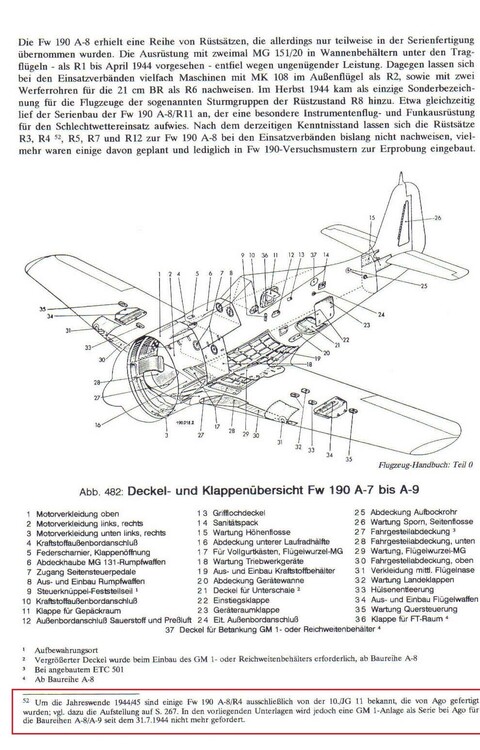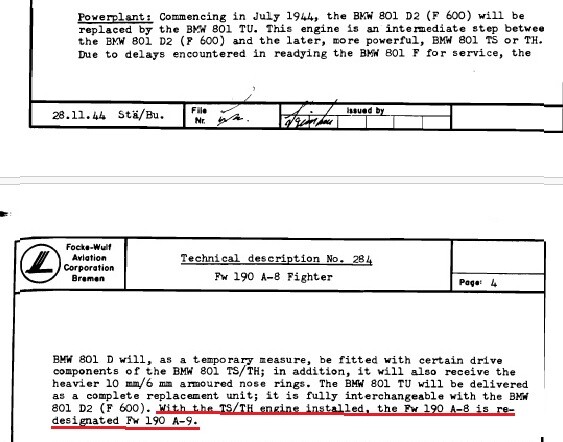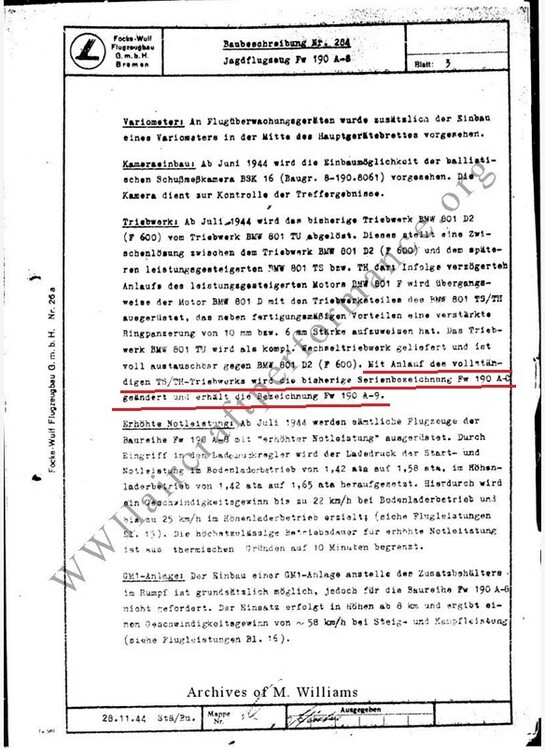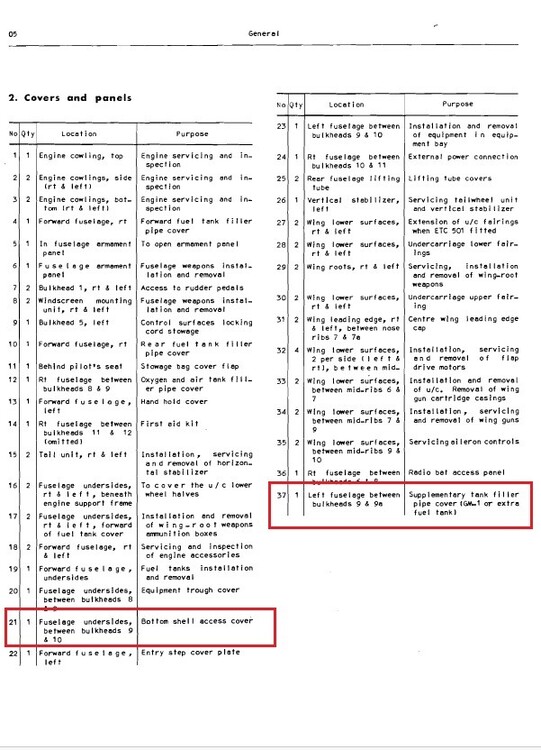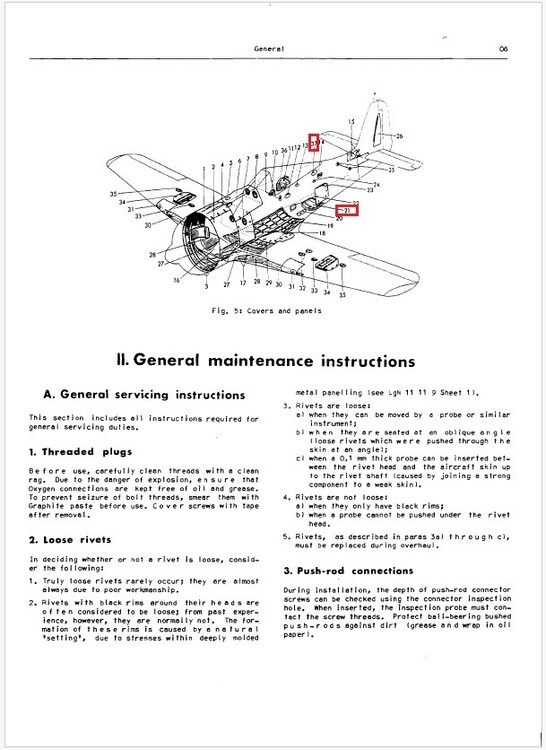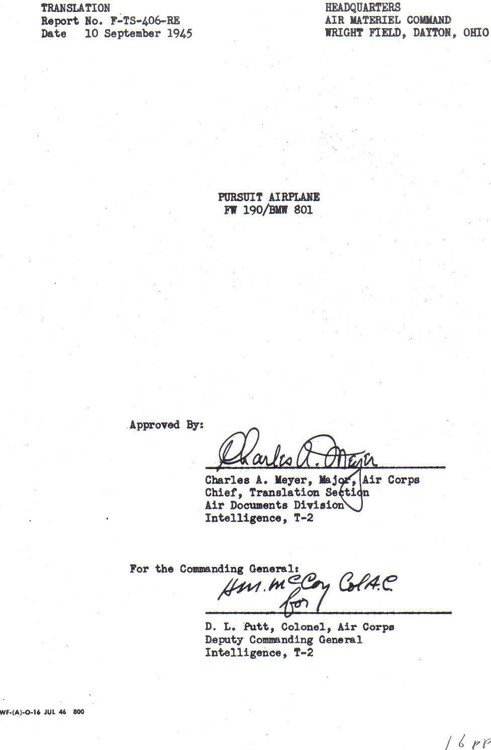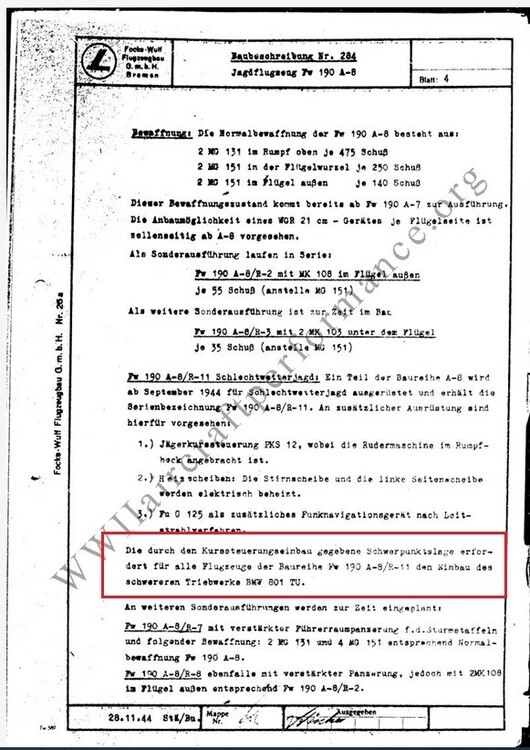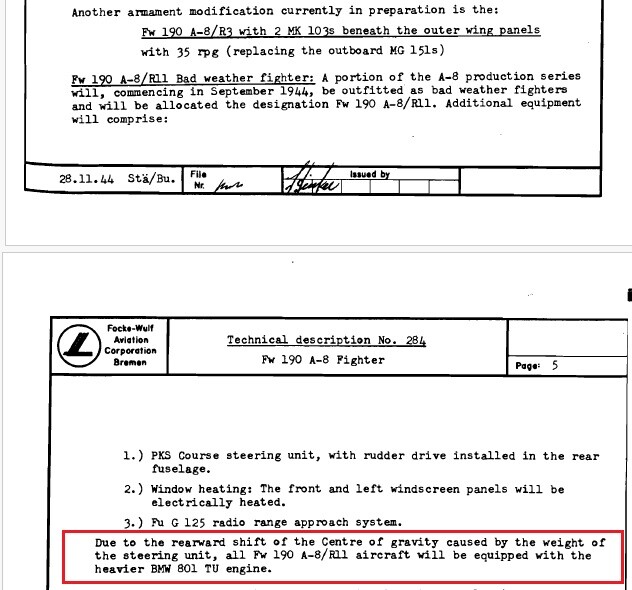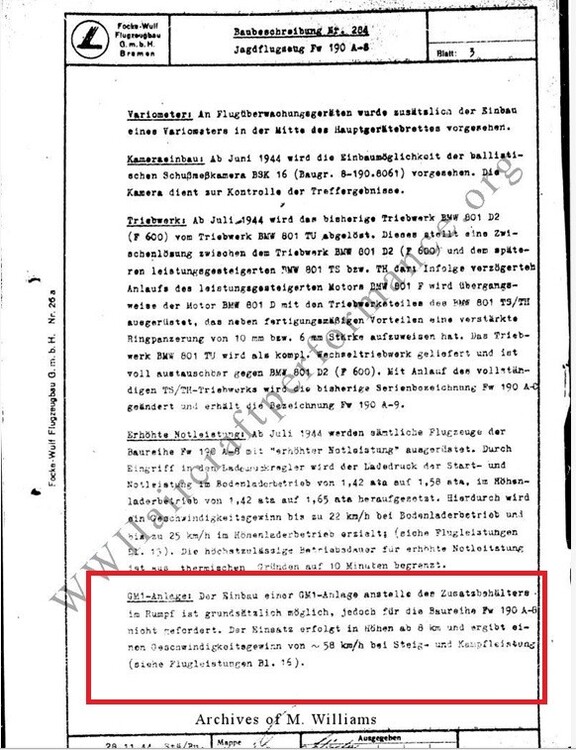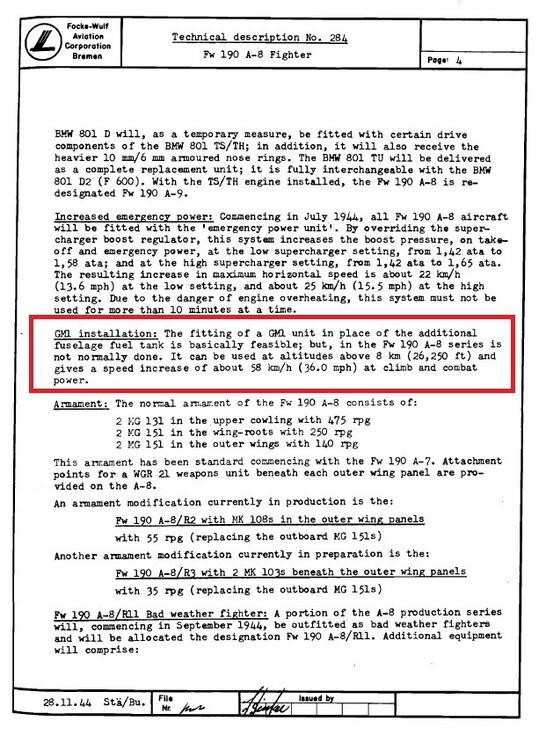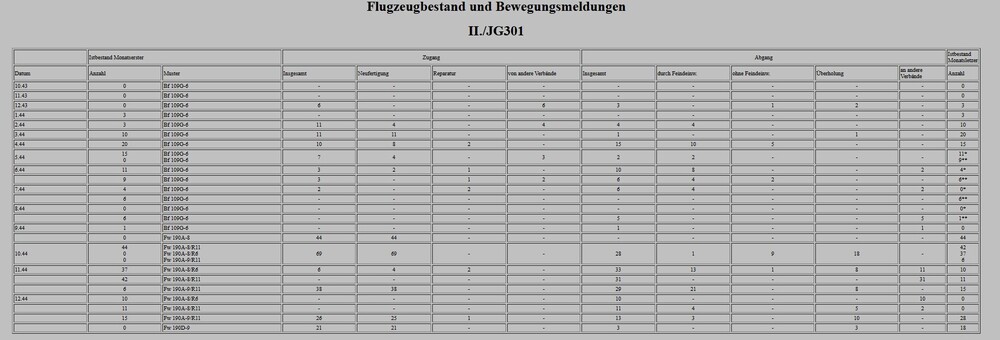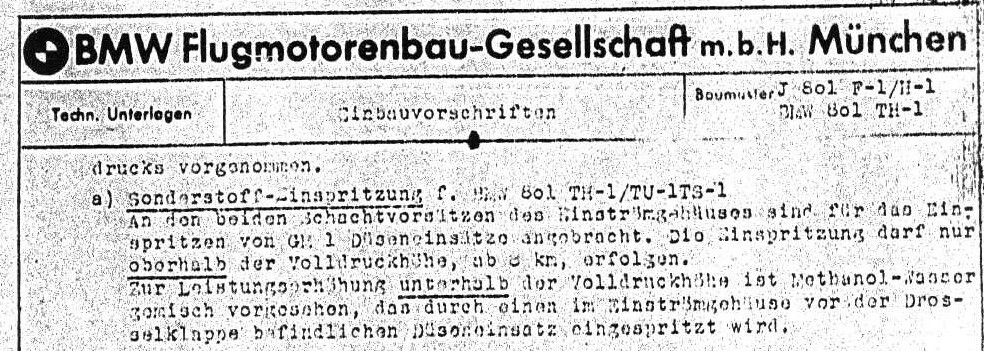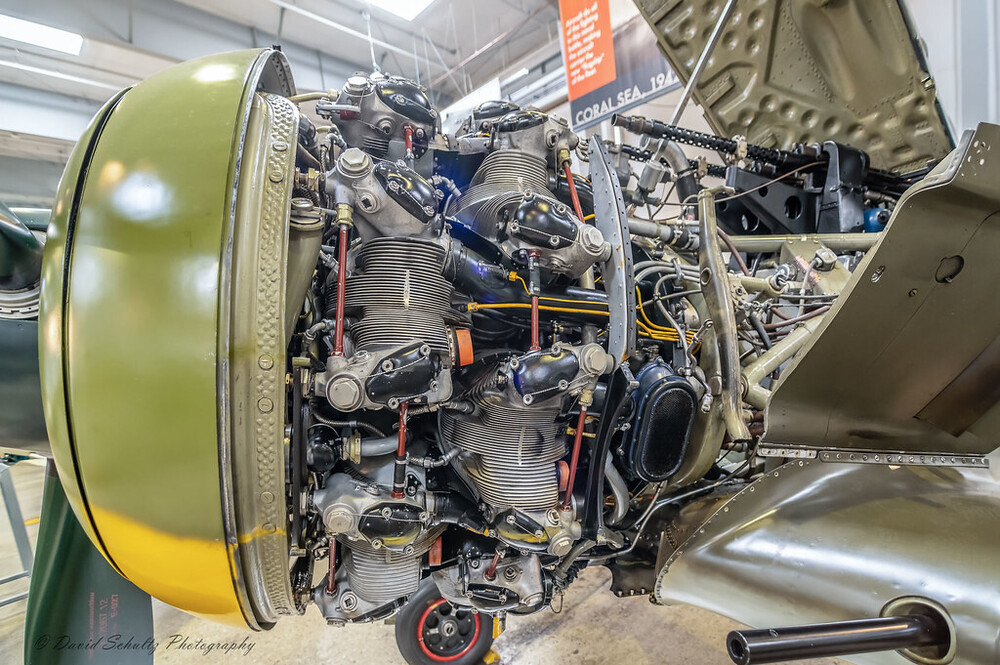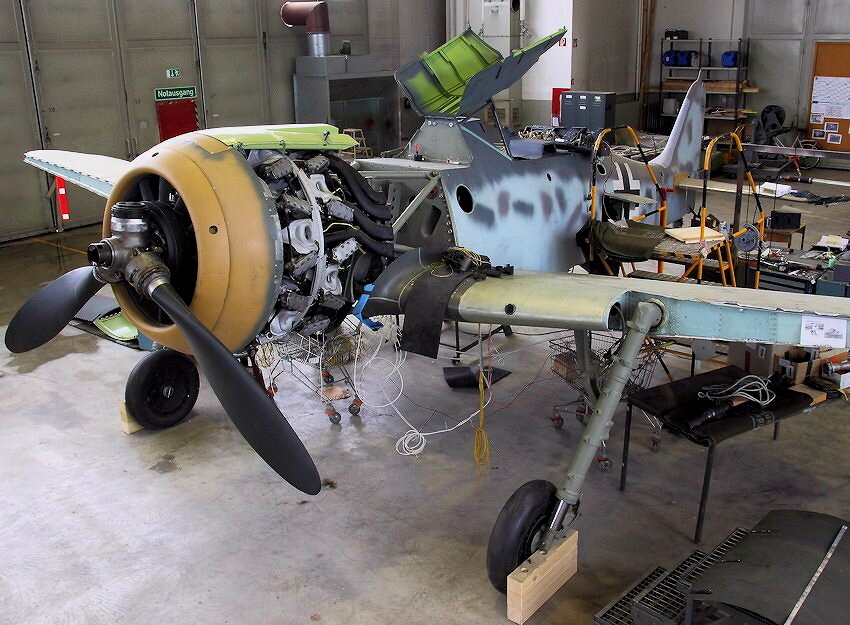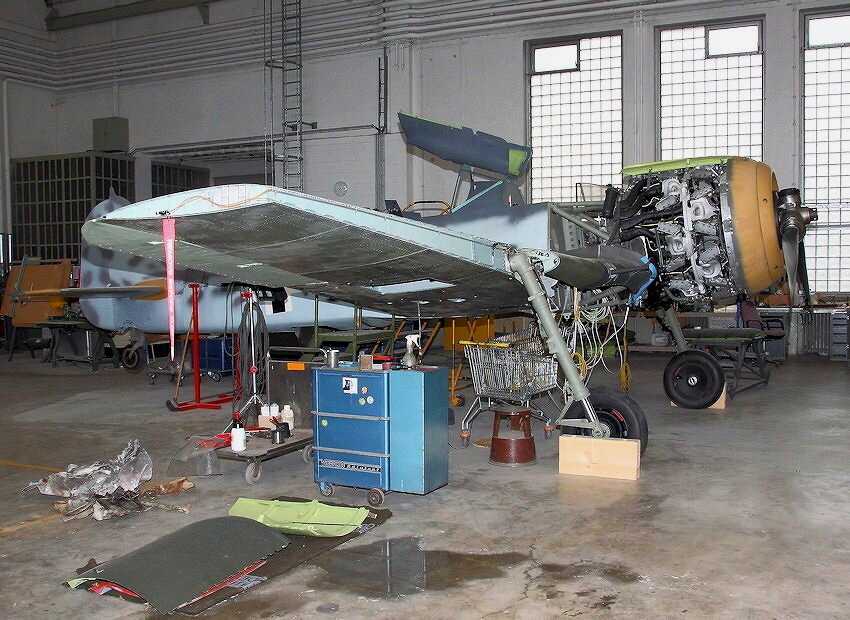

Crumpp
Members-
Posts
1593 -
Joined
-
Last visited
-
Days Won
3
Content Type
Profiles
Forums
Events
Everything posted by Crumpp
-
This is the Modification list from Focke Wulf from April 1944. For C3 Einspritzung it authorizes the units to make the modifications. It is a engine modification as noted by "T" in the left hand margin. It notes the aircraft that require modification and instructs the Werknummer of the aircraft to be submitted to the RLM when modification is performed. The modification requires 13 hours of aircraft preparation, 2 mechanics assigned to complete the work, and 26 hours of work. Compare that with the unit installation of the R6 21 cm Rocket kits on the FW-190A4, A5, and A6 required 12 hours of aircraft preparation, 4 mechanics assigned to complete the work, and 48 hours of work. On the use of C3 Einspritzung at all altitudes: Arbeitsbericht Nr. 16 des Erprobungskommandos 25 vom 16.12.1943 (für die Zeit vom 1.12. bis 15.12.1943) 8.) Erhöhte Notleistung des BMW 801 D. Nach Vermessung der ersten Fw 190 wurden weitere Flugzeuge umgebaut. Beanstandungen haben sich bisher nicht ergeben. Es wurde noch in 8000 mtr Höhe eine erhöhte Leistung festgestellt. Bereits hier wird deutlich, dass die C3 Einspritzung nicht nur in niedrigen Höhen sondern auch wirkungsvoll ohne technische Probleme in großen Höhen eingesetzt werden konnte. Laut Nachfrage von Focke-Wulf wurde seitens BMW die Einspritzung und damit die erhöhte Notleistung für Höhen über 1000 m ab dem 20.1.1944 offiziell freigegeben. Die Nutzdauer der erhöhten Notleistung lag bei 10 Minuten. Work Report No. 16 of Test squadron 25, dated December 16, 1943 (covering the period from December 1 to December 15, 1943) 8.) Increased emergency power of the BMW 801 D. After measuring the first Fw 190, further aircraft were converted. No complaints have been received so far. Increased power was observed even at an altitude of 8,000 meters. This already shows that the C3 injection system could be used not only at low altitudes but also effectively at high altitudes without technical problems. Following a request from Focke-Wulf, BMW officially approved the injection system and thus the increased emergency power for altitudes above 1,000 meters on January 20, 1944. The effective duration of the increased emergency power was 10 minutes.
-
The 115 liter tank was removable. It was also the first tank to be emptied by the fuel system. Without a Centerline mounted drop tank: The 115 tank and no gauges to monitor the fuel level in flight. If there was fuel in it the system drew from the rear tank automatically. The pilot would know the 115 liter rear aux tank was empty when he saw the rear main tank fuel level drop below 240liters (full fuel for that tank). With a Centerline mounted drop tank: The system would feed from 115 rear aux tank first as long as the manifold pressure was in cruise flight and below 1 ata. In cruise settings, the 115liter aux tank would be used and then it would start using the fuel in the 300 liter Centerline Mounted drop tank automatically switching off additional boost pumps. At power settings above cruise, it automatically switched on additional boost pumps to meet the demand of increased fuel requirements. When the Centerline Mounted Drop Tank was empty it would be automatically switched to internal fuel logic. The only indication the Centerline Mounted Drop tank was empty was when the fuel in the rear main tank dropped below 240 liters. That means your 115 liter Auxiliary tank is emptied first. When the fuel circuit is using the drop tank, fuel is fed from the rear main tank. When the rear main tank contents drops below 240liters, fuel from the 300liter Centerline Drop Tank is fed to the rear main tank until it is topped off again to keep the internal main tanks full. The fuel system is built around using the fuel in the 115 liter Aux tank first automatically.
-
Isn't completely agreed upon. None that I am aware of outside anecdotal and Operational Testing. Approval and use are two different things. Factually, the Luftwaffe was concerned about the possibility of B-29's appearing over Europe. 150gr/sec injection rate would have been very useful for countering that possibility. It wasn't very useful against the altitude bands the other allied bombers flew at as its operational altitude band was above them. It would make sense only if Rodieke's excerpt was a typo. Then it would fit perfectly. In late 1943, early 1944 GM-1 at 150gr/sec was tested. In that time period, Focke Wulf had already modified FW-190A5 airframes to prototype the FW-190A8 and were tooled up for production of the FW-190A8. Eleven aircraft would have been feasible and the FW-190A8/R4 designation would have been applicable in the timeframe. 10/JG11 was the Luftwaffe Operational Test Squadron at that time as well. Otherwise, 10/JG11 did not exist at the end of 1944 and neither did the R4 designation when talking about an FW-190A8 after the publication of Technical Description Nr 284: Fighter Aircraft FW-190A8. The R4 designation was retired for the FW-190A8. R4 denotes the installation of an BMW801S motor which like the BMW801Q/TU engine was equipped for GM-1 right off the production line. It was built to use GM-1, came from the factory set up to use GM-1, and would not be a TS/TU engine without being set up, approved, and able to use GM-1. You keep thinking R4 means "GM-1", it does not. R4 means an BMW801S engine. That engine is inherently set up for GM-1. Once more, the Luftwaffe Depot maintenance had a large supply of older airframes to recycle and re-engine when a S motor was available. In testing of the BMW801S engine, the FW-190A5 airframe that the engine was mounted upon was called an FW-190A5/R4. That designation would have carried over as older airframes were re-engined. Yes. However any BMW801Q/TU engine that arrived in June would have had operational Erhohte Notleistung. The fact a separate Technical Order was published in the Form of "Focke Wulf Technical Modification Nr133" is solid proof of instructions being published to equip any FW-190A8 that did not come from the factory with Erhohte Notleistung. Technical Description Nr. 284 reads "Commencing in July, ALL FW-190A8 will be fitted with Erhohte Notleistung." It says nothing about "new production" but notes the entire fleet will be completely upgraded. It does not block out WerkNummers or designation only certain variants. It says ALL. Yes. BMW801S motors are also a possibility to be installed on an FW-190A8. It just changes the designation. The airframe modifications for GM-1 and the tank are built into every FW-190A8 as originally designed, delivered, and flown by the Luftwaffe. There is no mysterious lack of ability to use the system due to engineering on the part of the airframe or the engine. It was approved and existed as a capability. 80gr/sec test flights: http://www.wwiiaircraftperformance.org/fw190/Fw_190_V-45_7347_FB_Nr1.pdf http://www.wwiiaircraftperformance.org/fw190/Fw_190_7347_Nr2.pdf http://www.wwiiaircraftperformance.org/fw190/Fw_190_7347_Nr3.pdf It is interesting to note that the entire test regiment amounts to ~20 hours of flight time. For Flight Reports Number 2 and 3, they used an aircraft with a brand spanking new motor. That aircraft flew the remainder of the test regiment amounting to 8.8 hours of flight time. They note the high cylinder head temperatures at +20 Cina (Hot Summer Temperatures). That +20 is the ISA deviation and that is some very hot weather. There is no cause for concern as high cylinder head temperatures are normal on a brand new engine in any aircraft. Most aircraft engine manufacturers recommend at least 25 hours of flight time for break in. Most of that should be spent at max power with varying the throttle between 65%-75% every 15 minutes to prevent glazing. It can take that long for the rings to seat. You will know the rings seat when the Cylinder head temperatures come down to normal and stabilize. That is why they went ahead and approved it. So GM-1 was Approved in July 44 at 80gr/sec. The 115 liter tank was standard as delivered. The 85 liter GM-1 tanks also existed and in the supply system. The set up was tested and production planned since December 1943. The design changes are incorporated into the FW-190A8 as previously shown. All answered by Technical Description Nr 284: Fighter Aircraft FW-190A8. That document clarifies everything that is applicable to the FW-190A8. It specifically address the installation of BMW801S motor on an FW-190A8 makes the aircraft an FW-190A9. By virtue of the instructions in Technical Description Nr 284: Fighter Aircraft FW-190A8 specifically addressing BMW801S engines installed on an FW-190A8 it eliminates the R4 designation for the FW-190A8 specifically. That makes sense too. The FW-190A8 and FW190A9 have the exact same airframe with the no difference from the firewall back. If you put a BMW801S engine on any other Anton, it is not the same airframe therefore the R4 designation makes sense to differentiate the significance of the powerplant. An R4 designation would be redundant and unnecessary on an FW-190A8 airframe.
-
150gr/sec vs 80gr/sec.... Can you spot the difference?????
-
You do realize the entire Technical Description Nr234 is the Technical Description of the FW190A8. It is right there at the top...Jadgflugzeug FW-190 A-8. It is not talking about anything that pertains to anything else except the FW-190A8. The subject of the entire document is the Technical Description of the FW-190A8. It very clearly states that if an FW-190A8 receives a BMW 801D2 engine or a BMW801Q/TU engine the aircraft remains an FW-190A8. If you put a BMW801S engine on your FW-190A8 then it becomes an FW-190A9.
-
10/JG11 was disbanded in June 1944. https://www.ww2.dk/oob/bestand/jagd/b10jg11.html It is impossible for them to have received FW-190A8/R4's as the unit did not exist. Rodieke does not list his source for this information but he definitely notes the discrepancy and even produced the same documents I have shown you that approved GM-1 in July 44. It could be a typo as Focke Wulf and RLM were testing GM-1 in the FW-190A in late 1943 beginning of 1944. The edition of the installation manual I have is March 1944. The Endurance Testing of GM-1 in the BMW801D2 is from November of 1943. It passed with flying colors at 150gr/sec. That installation at 150gr/sec was probably tested in December 1944 by 10/JG11 and it would have been in an FW-190A5/6/7. BMW changed the injection rate to 80gr/sec which would have enacted another series of testing and that injection rate was specifically noted as approved in July 1944. The FW-190A8 was conceived with the installation of GM-1 or a 115 liter Auxiliary tank. It was designed that way. Why you think BMW clarifying as the ENGINE builder that they will only handle the ENGINE building part of providing GM-1 and leave the AIRFRAME building portion up the AIRFRAME builder is puzzling. What is a definite fact is 10/JG11 did not exist at the turn of the year 44/45 for them to receive a variant whose designation was defunked a year before and clarified in Technical Order Nr234.
-
And? What does that have to do with the FW-190A8 variant? Every FW-190A9 had a TS engine from the "production line" at BMW. FW-190A8's did not come with BMW801S engines at all. If you put an BMW801S engine on your FW-190A8, Focke Wulf says you call it an FW-190A9. It's a simple concept.
-
And production started in February 1944.... Again, for every other FW-190A that would mean first deliveries would have been in MARCH. They were not. Factually All FW-190A8's did have two additional access doors or are you still claiming that was just impossible too? One of them is even labeled for GM-1 in the description found in the Flugzueg Handbuch, lol. You can look at any FW-190A8 and see both access doors. Find a single FW-190A8/R4 in service anywhere or anything that contradicts Technical Description Nr 284 in regards to re-engining a FW-190A8 with a TS engine.
-
What report are you talking about. I am referring to the production dates of the FW190A8 and when they show up at the Geschwaders. For example, FW-190A6 production was planned for June 1943. FW190A6 show up in the Geswaders in July 1943. Same with EVERY Anton Variant after the FW-190A3 except the FW-190A8. The FW190A8 production began in February 1944. There is a two month lag before the first ones start showing up in the Geschwaders. A month longer than any previous type.
-
BTW, Your whole hoopla about the two access panels being required is exactly why FW-190A8 production was delayed. They installed those access panels before pushing the type to the Luftwaffe. That is why deliveries took so long from production in the first FW-190A8's.
-
Has nothing to do with TU engines or the fact a hybrid motor was built. It simply states if an FW-190A8 gets a BMW801S engine, it becomes an FW-190A9. The production line making engines is completely seperate and not linked to any airframe. It just says once they start making engines, if one goes on an FW190A8 then that airplane is going to be called an FW-190A9. It does not say a damn thing about who installs the engine. That eliminates the R4 designation. http://fw190.hobbyvista.com/variants.htm
-
And how is an FW-190A8 going to get a TS engine and become an FW-190A9???
-
No, it is not. Factually the Luftwaffe Depot maintenance facilities overhauled and recycled damaged aircraft all the time. That is exactly where White 1 came from as it started out an FW-190F8 as delivered from the factory and was converted to an FW-190A8 by the receiving yard/Depot Maintenance in Norway. When magic happens and a BMW801S motor appears upon an FW-190A8 it now to called an FW-190A9 and NOT an FW-190A8/R4.
-
GM-1 and Erhohte Notleistung could be used together. GM-1 and C3-Einsptrizung could not.
-
And Baubeschreibung 284 does not change a thing on FW-190A9 production. All FW-190A9's were built with BMW801S engines. Baubeschreibung 284 only speaks to older airframes using older engines that are re-engined with a BMW801S engine. Those aircraft are to be redesignated as an FW-190A9. The engine installation changes the type designation. No FW-190A?/R4...just FW-190A9's and whatever Rusatze kit was installed. Can you imagine the nightmare of keeping track of your FW-190A8/R4//R6 around or having to order parts for your previously flown FW-190A8/R6 before it got a motor swap??? Baubeschreibung 284 simplifies all that just calling in an FW-190A9/R6.
-
-
R4 designation does not exist because it denoted an FW190A re-engined with a BMW801S series engine. The decision was made and published in Technical Description Nr 284 to just call them FW-190A9's irregardless of who installed the BMW801S engine. Once again:
-
LOL You literally see those access panels on EVERY FW190A8 ever built. One is on the Left side above fuselage access door. It doubles as the installation point for the auxiliary fuel tank fill port or GM-1 fill port. It is the same thing. The other is the big round hole in the bottom of the FW-190A8 right under the tank installation. It is not any harder to run that hose from the tank than to the intake fittings than it is to run a wire to launch rockets thru the wing of your P51, P47, P38, F4U... You actually run fewer hoses and shorter distances than you do wiring up the rockets, LOL. In fact, there are already at pathway thru the bulkheads for it on the FW-190A8. I guess they never fired rockets out of US airplanes either because they were not "fitted" for rockets by your reasoning.
-
LOL It takes less time to fit the 85liter GM-1 tank than it does to equip a P47 with rockets. Either you are just flat out lying to try to win an internet discussion for some reason or not reading the full instructions. FW-190A8/R11's had production priority for the BMW801Q/TU series engines. Without that engine, it wasn't produced.
-
Since that is the reference material for the approval of GM-1 at 80gr/sec in the BMW801D2 engine it says EXACTLY what I have told you. And for the third time: LOL. Okay let's walk you through it using the specific instructions from Focke Wulf and BMW. 1. What is the only engine the FW-190A8/R11 came from the factory with? A. Chevy 350 V8 B. Lycoming O-360A1A C. BMW801Q (BMW801TU) *hint - its the same motor found on the NORMAL FIGHTER Variant that crashed in England in August 1944. You know the airplane that wasn't an R11... The FW-190A8/R11 operated by II/JG301 for example: https://www.ww2.dk/oob/bestand/jagd/biijg301.html 2. True or False "The BMW801Q engine came equipped from the factory to use GM-1" A. True B. False It's an open book test so I will give you a hint: *GM-1 is mentioned right here in the Engine Installation manual...the document the guy picking up a wrench uses... How do we know this was ground reality? Well, we have an airplane with this exact engine equipped from the factory to use GM-1: The British conclude it was equipped to use it.
-
Change the channel, your brain is stuck on GM-1, LOL. It's not a mystery. The instructions are very clear. The equipment is very clear. It was approved for the 80gr/sec use in July 44. Definitely, every FW-190A8/R11 came equipped to use it. It's use in the BMW801D2 engine was approved but not recommended. The BMW801Q and BMW801S series came standard with it. Drawbacks: 1. It's heavy and unlike the normal 115 liter fuel tank, you are not using it up while you fly to the combat zone thereby decreasing your weight. Fuel is more useful. GM-1 gives you no viable performance boost unless you are operating in the Altitude band above 8km and there it gave the FW-190A8 a 58kph increase in speed at Climb and Combat Power. Below that, it is just extra weight. 2. It cannot be readied the night before or allowed to sit for long periods. It must be filled and used within a 6-8 hr time frame. It will leak out of the system. Therefore, your alert flights have to be filled just as they come on duty and the system pressure monitored. This was a huge problem for the British as their transit times to the combat zone were much longer. 3. It is extremely flammable and Liquid Nitrous requires special handling/equipment. The Germans used Liquid Oxygen daily which is even worse so unlike the Royal Airforce at least the Ground crews were already familiar with the procedures and equipment for handling such HAZMAT. The fill ports for the Liquid Nitrous were external and it could be done directly from the portable fill tank cart. You just plugged it in and open the valves to pressurize the system. Those valves must O2 clean and not come into contact with any Petroleum based products just like every Pilot O2 Oxygen system in existence no matter if is liquid or compressed. BTW. There are many more BMW801Q engines and BMW801S engines in existence today than there are BMW801D2's. The BMW801D2 is extremely rare to find and it took years of searching to find one that could be rebuilt for White 1. Guess what motor is Displayed at the BMW Museum: Notice the Rocker Box Housings modification to simplify maintenance and Exhaust Routing for Cylinders 9-10... BMW801D2 for comparison, Notice the Rocker Box Housing: Notice the exhaust routing on Cylinders 9-10: Here is the FW-190A8 that is on display getting ready for display. Notice what engine it has....
-
It's in March 44.
-
How do you miss the significance of a Normal Fighter Variant crashing in England in August of 1944 equipped with Erhohte Notleistung? It literally makes your argument if you know the technical history. How do you miss the significance of that airplane having a Q series engine and the much less common approved but not recommended might not have been used at all GM-1 to your whole argument that Erhohte Notleistung was much more common. It is a fact a EN equipped engine landed in England in 1944. It's a fact that EVERY engine meant for a fighter came from the FACTORY equipped with Erhohte Notleistung starting in July 1944. That aircraft is literally a Werknummer block from JULY for NORMAL FIGHTER Variant. It is definitive proof that program was ground reality. In terms of your game, I would bet it was much more common than a few 2nd TAF Spitfires using 100/150 grade fuel engaging German Fighters instead of chasing V1's over England. Erhohte Notleistung was approved more than six months earlier. The Operational Fighter Geschwaders were asking for it since the successful testing of C3-Einspritzung. They definitely noticed that the Ground Pounders got a big performance improvement. It had been anticipated for a year and half and before that testing for C3 Einspritzung for all altitudes for use in fighters had been successfully tested for operational use. Erhohte Notleistung literally grew out of that whole program when they realized the engine did not require all the extra knock limited performance. You are aware of massive improvements in C3 fuel knock limited protection? The RAE noticed it from just 13 samples puzzling over the improvement in Rich Mixture Performance. They also worried about the hydrogenation process Fisch Trop had developed that literally became by 1944 how 99% of all German Aviation fuel was produced. The RAE noted the fuel samples for C3 going as high as 140(+) Octane in 1941. The United States did their own testing and I am sure you know there are multiple methods of determining Octane levels and they don't correspond to the same values either. The United States Petroleum board was worried that C3 fuel was already 145 Octane in 1942.




